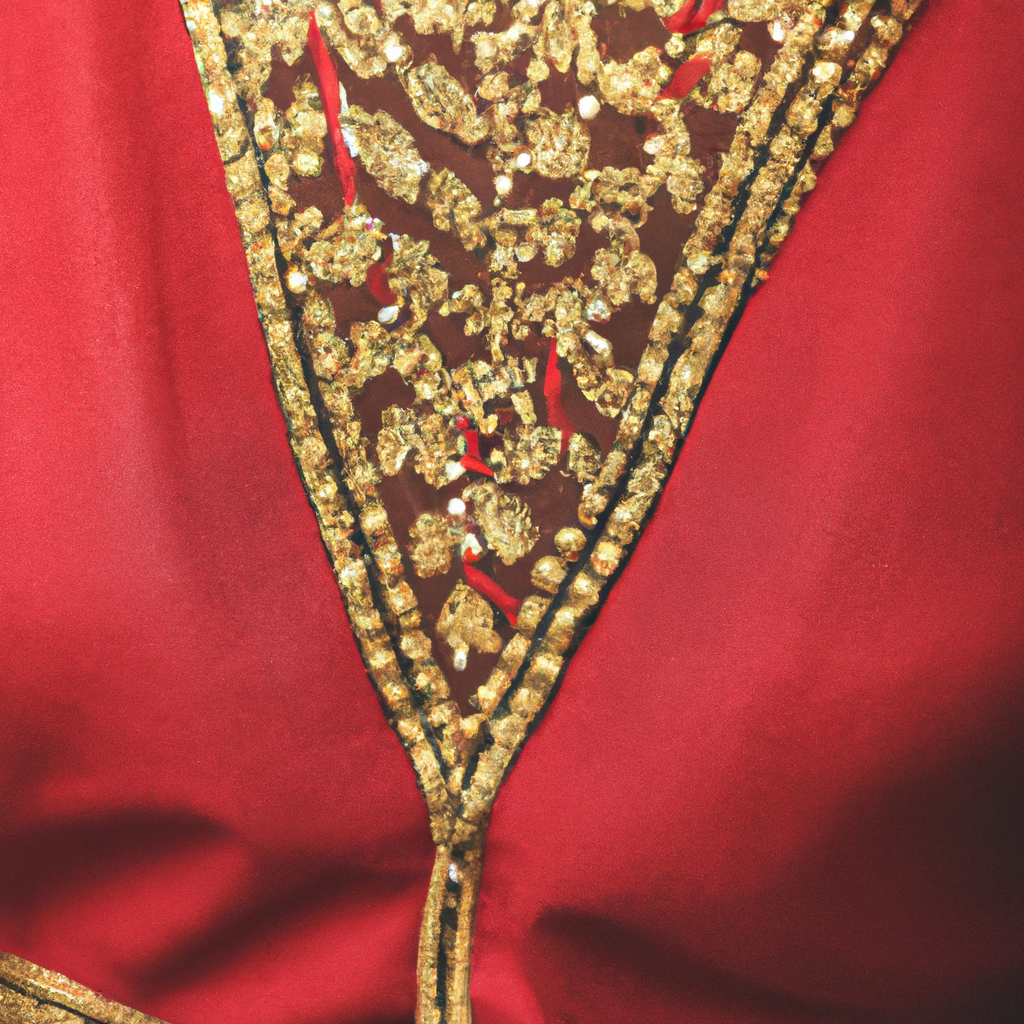For centuries, traditions like unique cultural attires have been an expression of people’s heritage and beliefs. They often act as representation of a certain region and its distinct customs, helping form the idea of cultural identity. From the brightly coloured silk sari In India to the African kaftan and the Scottish kilt, the fascinating array of traditional outfits worn by people shows the world that each culture carries its own unique legacy. This article is going to showcase some of the most eye-catching and iconic traditional attires from around the globe.
1. Dressing to Impress: The Beauty and Complexity of Traditional Attire
When we think of fashion, looks and sophistication come to mind, but traditional attire goes beyond being fashionable. Traditional clothing represents history, culture, and identity on a greater level. From colorful designs to detailed fabrics, traditional garments can be both beautiful and complex.
- Functional Comfort
- Symbolism and Tradition
- Style and Design
Traditional clothing was originally developed with functionality in mind. As people changed with the times, they realized that certain fabrics, cuts, and construction techniques allowed them to feel more comfortable. For example, kimonos are worn by both men and women in Japan. Its wide sleeves create flexibility in movement, which is beneficial for walking or performing traditional martial arts.
- Kimonos
- Saris
- Djellabas
In addition to comfort, traditional attire has often had a deeper cultural purpose. For example, some traditional garments are chosen to represent a person’s place within the family or the community. The colors, patterns, and even types of fabric used can carry symbolic meaning. The beautiful sari is considered a symbol of Indian culture and is still worn to all types of special occasions.
Traditional clothing is also an expression of art and style. Different regions have their own specific ways of dressing, and people take pride in their attire and how it’s put together. Some djellabas from North Africa use embroidery, applique, beadwork, and even gold thread to create intricate, eye-catching patterns.
It’s obvious that traditional attire is more than just fashion. It serves practical purposes, carries symbolism, and expresses creativity. Whether it’s a kimono in Japan or a djellaba in North Africa, dressing in traditional clothes is an opportunity to appreciate the complexity and beauty of different cultures.
2. An in-depth Look at the World’s Fascinating Traditional Costume
From red-cheeked Dutch wooden shoes to brightly-hued Navajo tribal headdresses, traditional costumes around the world remain a constant source of fascination. Let’s take a closer look at some of these timeless pieces of culture and history.
Hanbok of Korea
- The Hanbok of Korea is unique for its subtle beauty and its layers. A Hanbok is worn by both men and women. It can be made from cotton, silk, or hemp depending on the season and occasion.
- The garments have loose sleeves and are structured for comfort and extravagance. Generally characterized by vibrant colors and geometric patterns, these timeless garments are often seen adorning weddings and festivals.
Garments of Purim
- Purim is an ancient Jewish holiday celebrated in the Jewish communities of Israel and the diaspora. Purim celebrates a miraculous escape from the wicked Haman.
- On Purim, it is tradition for every person in attendance to dress in costumes, both men and women. It is a visual representation of the story of Esther, and costuming is meant to spread the message and celebrate freedom.
Kimono of Japan
- The kimono of Japan was once known as the Japanese national dress. It is a robe-like garment with long sleeves, which is worn with an obi, or wide sash, tied at the waist.
- Nowadays, the kimono is generally worn for special occasions and festivals, particularly those celebrating marriage. Wearing a kimono is seen as a sign of respect and tradition.
Sarong of the Malay Archipelago
- The sarong, a type of traditional skirt in the Malay Archipelago, is one of the oldest forms of traditional dress in the region. It is a piece of cloth which is tied in various knots, and is typically worn around the waist.
- Sarongs have different lengths, patterns, and colors depending on the region, and local preferences. A favorite material for making sarongs is batik, an age-old wax-and-dye technique.
These are just a few of the captivating traditional costumes from around the world—each one with its own story to tell. With each garment, we can learn about a different culture, its beliefs, and its traditions.
3. Exploring the Variety of Cultural Formalities and Dress Styles
From traditional African garments embellished with vibrant colors, to modest Islamic dress in Middle Eastern regions, cultures across the world boast their own unique dress styles. All of these are beautiful displays of cultural pride, and here are some of the most captivating:
- Sari, India: Showcasing exquisite drapery and intricate embroidery, the typical Indian sari is a stunning combination of elegance and finesse. Women of all ages drape six to eight yards of fabric around their bodies in a sophisticated way.
- Sombrero, Mexico: The traditional charro suit of Mexico features a wide-brimmed sombrero, a loose, short-sleeved white shirt, and tight-fitting gaucho pants. The style is topped off with a vibrant and colorful waist sash.
- Gho, Bhutan: The traditional dress of Bhutan’s people, this outfit consists of a long robe-like garment with knee-length socks, and a belt that ties at the waist. Men typically wear them in colors of dark green or black, while women wear bright and vibrant colors with an array of intricate motifs.
- Kimono, Japan: Kimono are more than just a garment; the traditional Japanese outfit considers a symbol of respect and layers of significance. Heavily influenced by seasonal festivals, the Japanese take great pride in the kimono, and each piece undergoes meticulous tailoring.
Dressing in accordance with cultural formality laws is an important part of many societies. But that doesn’t take away from the aura of style and sophistication these garments bring to the wearer. Bright colors, delicate scarf-wrap designs, and intricacy with fabric all combine to make amazing dress styles from around the world.
Retro style has come into vogue, bringing back traditional clothing from India, Peru, Mexico and other countries. While today’s fashion might lack the significance of its cultural predecessors, it still packs a lot of colorful and daring visual stimulation.
Whether you want to dress to fit in with your culture or mix vintage fashion from different countries, there’s a variety of clothes and accessories to choose from. It’s a great way to express your individuality and show your appreciation for a different culture.
4. Understanding the Significance of Attire in Different Cultures
Dressing Traditions
Different cultures have distinct and unique dressing traditions. From flowing East Asian gowns to the more tailored Western business attire, knowing the history and significance behind different forms of clothing can help to cultivate a greater respect for international cultures. Here are some of the more noteworthy pieces that make up each culture’s wardrobe:
- In India, the sari is a traditional dress for women, often elaborately designed and symbolic of family status or social class.
- In East Asian countries, kimonos are the traditional garment. Once worn as a court dress, kimonos are well suited for the region’s climate and are appreciated for their exquisite sophistication.
- In the western world, business suits are often seen as being the definition of a professional look. A polished suit with a white shirt and dress shoes is customary for men attending formal events or conducting business dealings in a corporate office.
- The traditional garment of some Middle Eastern countries is the thawb – a long white robe worn by men that is usually accompanied with a kaffiyeh, a large piece of cloth made of wool, cotton, or silk.
Cultural Symbolism
Beyond aesthetic, many cultures attach additional symbolic meaning to various forms of clothing. The garments worn signal not only the wearer’s beliefs but also their heritage. For example, Muslim women may choose to wear the hijab as a way to signal their faith in public. As well, Native American communities often opt for beading and featuring feathers in their clothing to symbolize their ancestry and cultural importance.
Global Integration
Something to consider with regards to respect for different cultures is the global integration that has been steadily increasing in the past decades. People move globally to further pursue their dreams or relocate for work opportunities. Wearing attire from different cultures is starting to become a norm, as customs and traditions become more and more intermixed. It’s important not to forget the significance of the pieces we pick out, as clothing customs and cultural roots have great value.
Find Your Style
Whether it’s for a celebration, event, or simply part of your everyday wardrobe, honoring and respecting traditional attire from different cultures is a great way to demonstrate open-mindedness and appreciation for diversity. Whether it’s for performance art or an evening out with friends, make sure to find your own style as you investigate the significance of international fashion!
From Africa to the Arctic, and from Japan to Colombia, it is clear that the tradition of formal dress is one that spans all custom and cultures. It is a fascinating part of the multicultural world we live in, and it is evident that traditional attire remains a powerful representation of each country’s distinct cultural heritage and history. So whether you’re walking the streets of London or the rural roads of Indonesia, be sure to take a moment and observe the impressive array of formal wear on offer. As each article of clothing is its own unique chapter in the global book of culture.




